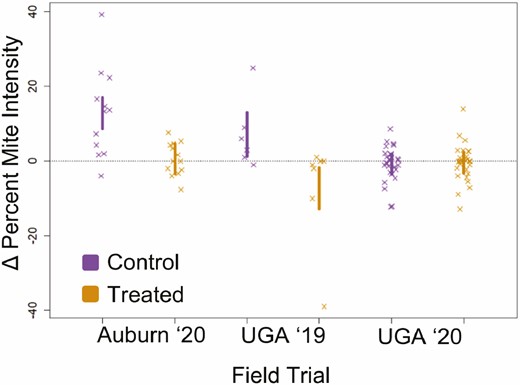Experimental A. mellifera colonies were established in the summer months of 2019 & 2020 and maintained in two deep Langstroth hives on research lands maintained by the University of Georgia (UGA) Bee Lab in Watkinsville, GA and the Auburn University Bee Lab in Auburn, AL. Queens, with no specific genotype, were purchased from a commercial operation in North Georgia. Prior to the beginning of the experiment, colonies were assessed and only those that were healthy with productive queens were included. Colonies were not manipulated to be ‘standardized’ in size or brood area beyond all being maintained with equal hive space, so as to accurately capture the variation in colony metrics observed in real apiaries.

 academic.oup.com
academic.oup.com

Assessing Repeated Oxalic Acid Vaporization in Honey Bee (Hymenoptera: Apidae) Colonies for Control of the Ectoparasitic Mite Varroa destructor
Abstract. The American beekeeping industry continually experiences colony mortality with annual losses as high as 43%. A leading cause of this is the exotic, ec


